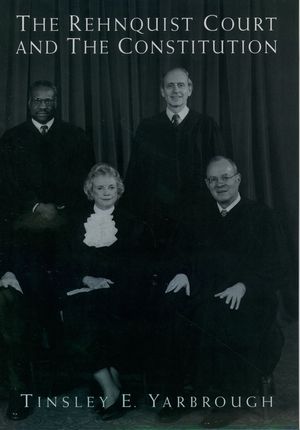We will be closed from 5pm Thursday 17th April for the Easter Bank Holidays, re-opening at 8.30am on Tuesday 22nd April. Any orders placed during this period will be processed when we re-open.

In The Rehnquist Court and the Constitution, Tinsley Yarbrough provides a comprehensive look at today's Supreme Court Justices and their record--a study all the more valuable for the Court's mixed decisions and hard-to-categorize course. An accomplished biographer, Yarbrough offers incisive portraits of the nine who now sit on the high bench, and tellingly reviews their nomination hearings. He also explores the workings of the Court, ranging from the selection and role of the clerks to the work load (including the end-of-term ""June crunch"") and assignment of opinions. But the heart of the book is a systematic exploration of the Court's record in such fields as government power, economic regulation, and criminal justice. In decision after decision, the author discusses the various justices' opinions, arguments, and legal theories; he also offers his own analysis (including a sharp critique of the decision to allow the Paula Jones lawsuit to move forward).;Like many writers on the Rehnquist Court, Yarbrough finds a general continuity with the past, shaded by a conservative outlook (especially in matters of criminal justice and affirmative action), but he identifies a significant departure in its rulings on economic regulation. Since 1937, he writes, the Supreme Court had generally adopted an expansive view of federal power over economic matters; the Rehnquist Court has reversed that trend. The Rehnquist Court has not launched an all-out assault on the Warren Court's precedents, as many conservatives hoped, but as Yarbrough shows it has embarked on important new departures. Thoughtful, wide-ranging, intelligently written, this book will stand as the finest study of the Rehnquist Court for years to come.